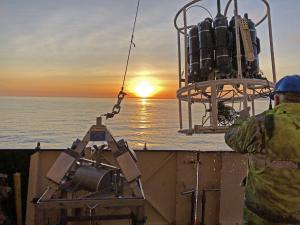How does Arsenic get into our food?
Date published:
How does Arsenic get into our food? Until 2017 we didn’t know that up to 20% of the arsenic deposited on the land is from the sea! QUB, The University of Aberdeen and AFBI are now looking into this …#Oceanography #Poison

AFBI are currently undertaking some pilot work with Professor Meharg at QUB within their Oceanographic programme – this work is showing great promise in helping to identify the sources and significance of the contributions to the global Arsenic cycle from the marine environment.
This latest studentship will focus on specific elements of arsenic biogeochemistry to allow QUB, The University of Aberdeen and AFBI to investigate the transfer of Arsenic from the lithosphere into the biosphere. This should then help us to better understand how biological and oceanographic processes control the transfer of arsenic into the atmosphere and our terrestrial ecosystems.
There are considerable gaps in our knowledge of how arsenic is globally cycled despite it being an element of incredible biological significance when it enters the food-chain. For soil and sediments & in freshwater environments our understanding of how arsenic is microbially metabolised & cycled has advanced over recent years. This is in sharp contrast to the marine environment where our comprehension of microbial metabolism of arsenic is extremely limited.
Only in 2018, Professor Meharg from QUB discovered that the marine euphotic zone contributes a significant amount of arsenic to the atmosphere by biovolatilization, and his recent studies in both the Indian (Savage et al., 2017) & Atlantic Ocean settings (Savage et al., 2018), show that 20% of arsenic deposited to land is as organic oxidized arsines, of marine microbial origin.
This marine contribution to the atmospheric arsenic budgets, & subsequent redeposition to soils & freshwaters (Savage et al., 2017, 2018), represents a major omission in our understanding of arsenic’s global biogeochemical cycle (Savage et al.; 2018).